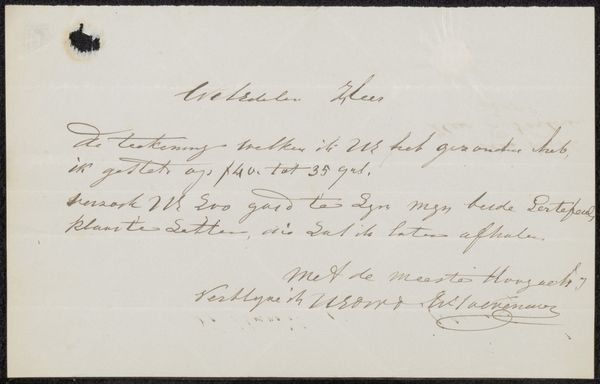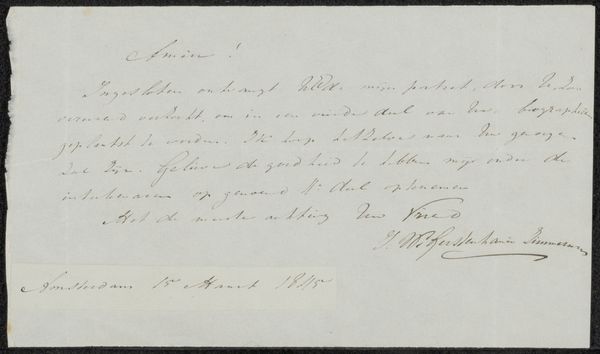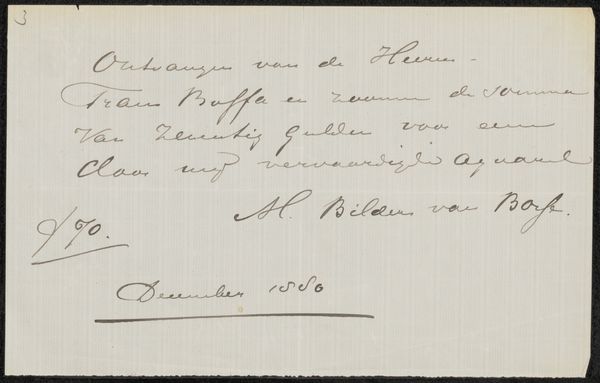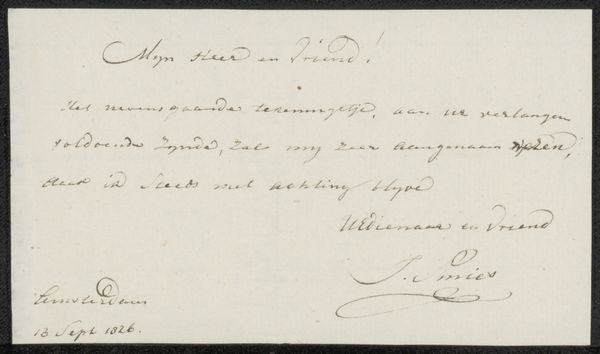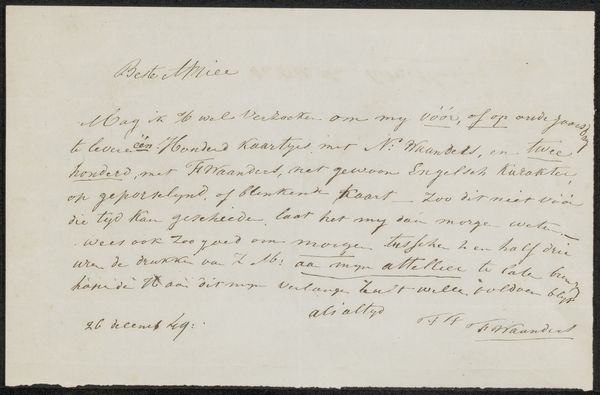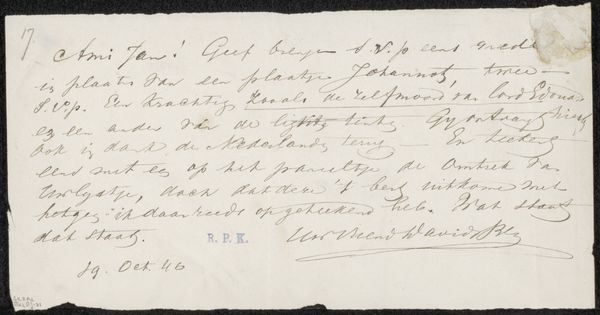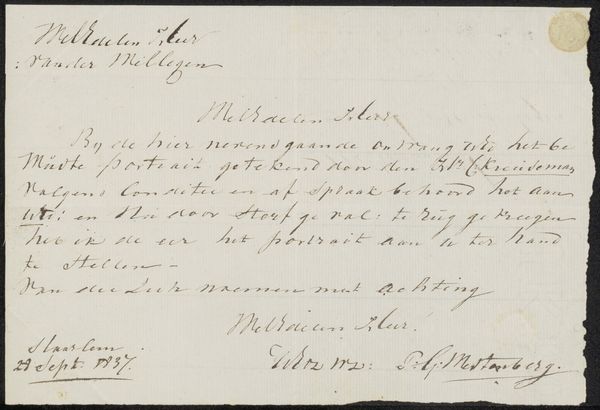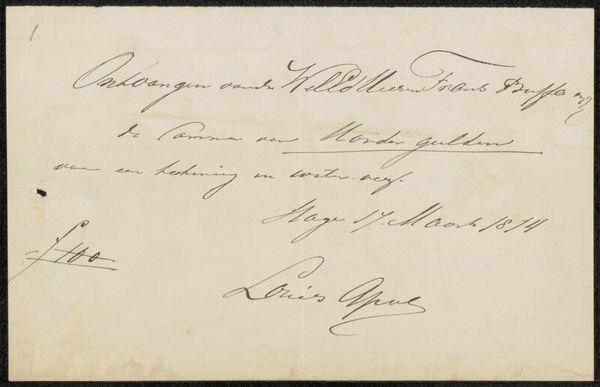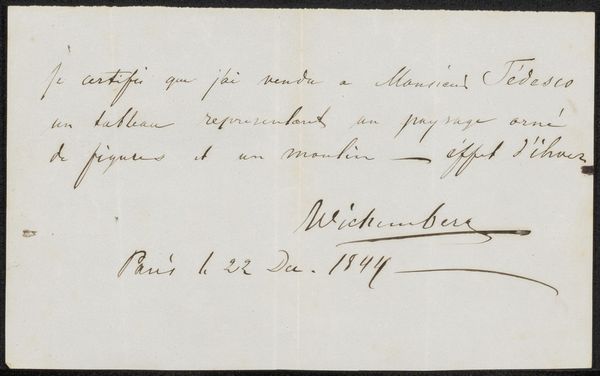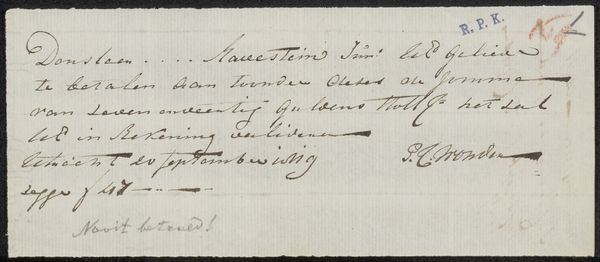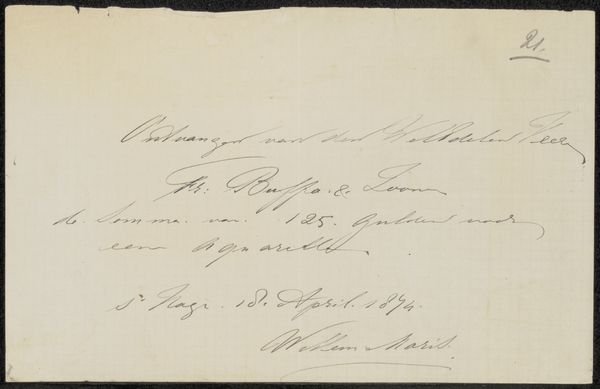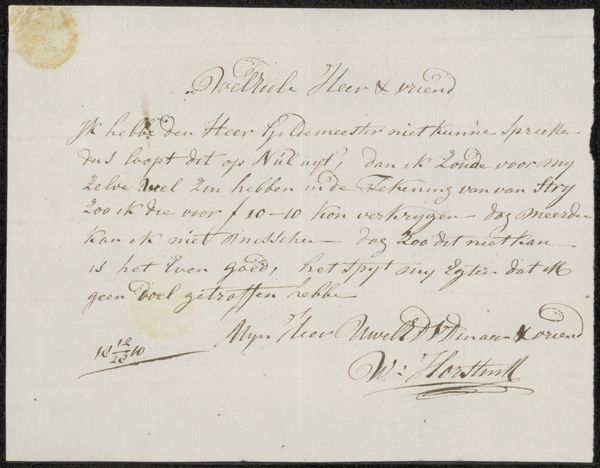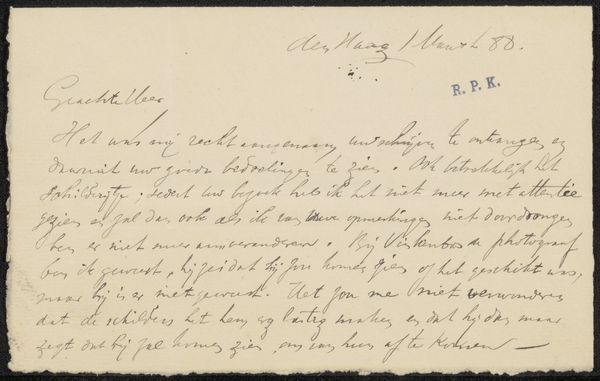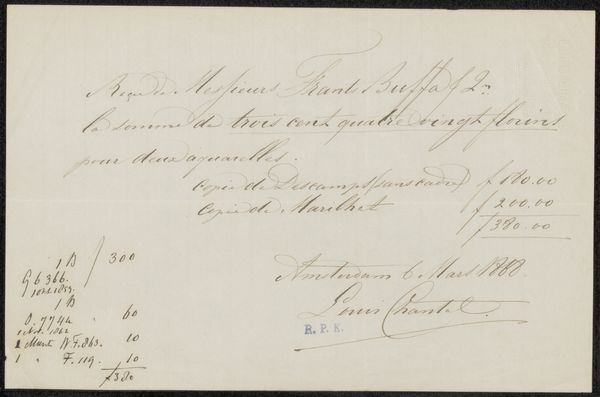
#
comic strip sketch
#
pen sketch
#
hand drawn type
#
personal sketchbook
#
ink drawing experimentation
#
pen-ink sketch
#
ink colored
#
pen work
#
sketchbook drawing
#
sketchbook art
Copyright: Rijks Museum: Open Domain
Editor: This is “Brief aan anoniem,” or "Letter to Anonymous," thought to have been made between 1821 and 1827 by Louis Moritz. It's in the Rijksmuseum and looks to be pen and ink on paper. There's something so intimate and immediate about seeing someone’s handwriting; it feels like a direct connection to the past. What do you make of this work? Curator: The appeal you sense is part of its historical power. Consider how much communication, especially personal communication, depended entirely on handwriting in the early 19th century. This wasn't simply a functional act; calligraphy was an art form, a marker of social standing and education. This letter, even though its content is obscured by time and anonymity, participates in that culture. What does it tell us about literacy, social interactions, and perhaps the very construction of identity in that era? Editor: I hadn’t thought of it that way. I guess I was focusing on the personal, private aspect, but you're right, even that privacy existed within very specific social frameworks. So, the neatness of the script and the formal language point to a specific audience and purpose, regardless of who the anonymous recipient was. Curator: Exactly. It invites questions about power dynamics: who was likely writing letters like these? Who received them? Where did they circulate? It transforms a simple document into a piece of social history. Also, note how museums act as both preservers and interpreters, granting importance and offering audiences. Does knowing it's in the Rijksmuseum change how we read this letter? Editor: It definitely does. Seeing it in a museum elevates it, gives it weight. I was drawn to it because of that intimate feel, but I'm leaving now considering the bigger picture - the social implications behind this personal correspondence. Curator: Precisely, and the museum then is not simply a container but a stage for interpreting this interplay between private and public spheres.
Comments
No comments
Be the first to comment and join the conversation on the ultimate creative platform.
